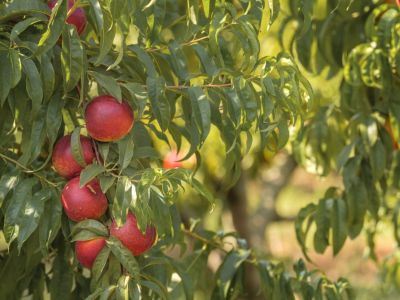Signs of Shot Hole Fungus
Shot hole disease thrives in wet conditions, especially during extended wet periods. The disease is most noticeable in spring, as new growth is most susceptible. Shot hole fungus commonly overwinters inside the infected buds, as well as twig lesions, where the spores may thrive for several months. Therefore, it is important to thoroughly inspect trees after leaf fall for any symptoms. Most signs of shot hole disease occur in spring, causing spots (or lesions) on new buds and young leaves and shoots. Buds will have a varnished appearance and spots will first look reddish or purplish brown in color and about ¼ inch (0.5 cm.) in diameter. Eventually, these spots become larger, turning brown and falling out—giving the appearance of gunshot holes in the foliage. As it progresses, the leaves will drop. The stress also affects the tree’s ability to produce, and any fruit that may develop will usually be affected as well with spotting on the upper surface that may even become rough.
Shot Hole Disease Treatment
Infections can occur anytime between fall and spring but they are usually most severe when following wet winters. Prolonged spring rains can also encourage this disease, as spores are spread from the splashing rain. Overhead watering may also contribute to the disease. Good sanitation is key to treating shot hole disease naturally. This is the surest way to keep the disease from coming back. All infected buds, blossoms, fruit, and twigs need to be promptly removed and destroyed. Contaminated leaves around and beneath the tree should be removed as well. Applying dormant spray — Bordeaux or fixed copper fungicide — in late fall is advisable, following the label instructions carefully. These sprays should not be applied in spring once new growth appears but additional applications may be necessary during wet weather.
